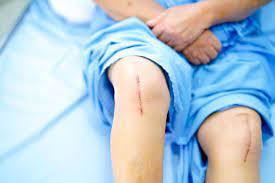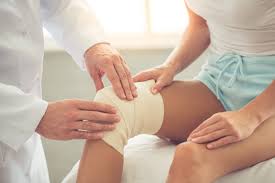Regenerative Therapy for Knee Pain: How Dr. Shohab Hyder Helps Patients in Karachi

Knee pain is one of the most common musculoskeletal issues, often caused by arthritis, injury, or aging. For many individuals in Karachi, knee pain can become a debilitating condition that hinders daily activities, making even simple tasks like walking, climbing stairs, or exercising difficult. While traditional treatments like medication or surgery may provide temporary relief, they often come with side effects or require long recovery times. Fortunately, regenerative therapies have emerged as an advanced solution, providing long-term relief and promoting natural healing. Dr. Shohab Hyder, a leading orthopedic surgeon in Karachi, is at the forefront of offering regenerative therapies in Karachi to help patients manage knee pain and improve their quality of life.
What is Regenerative Therapy for Knee Pain?
Regenerative therapy refers to a group of innovative treatments that aim to stimulate the body’s natural healing processes by using biological substances like stem cells, platelet-rich plasma (PRP), and growth factors. These therapies are designed to repair and regenerate damaged tissues, such as cartilage and ligaments, in the knee joint, which can help reduce pain and inflammation.
For patients suffering from knee pain, particularly those with osteoarthritis or cartilage damage, regenerative therapy offers a promising alternative to invasive surgical procedures like knee replacement.
Types of Regenerative Therapy Used for Knee Pain
Dr. Shohab Hyder utilizes the latest advancements in regenerative medicine to treat knee pain. The two most common types of regenerative therapies for knee pain are stem cell therapy and platelet-rich plasma (PRP) therapy.
1. Stem Cell Therapy for Knee Pain
Stem cell therapy involves the use of stem cells harvested from the patient’s own body (usually from bone marrow or fat tissue). These stem cells have the remarkable ability to develop into different types of cells, including cartilage cells, making them ideal for repairing damaged knee tissues.
Once the stem cells are harvested, they are processed and injected into the affected knee joint. The stem cells then promote tissue regeneration by stimulating the production of new cartilage, reduce inflammation, and repair damaged ligaments and tendons in the knee. This helps reduce pain, improve joint function, and delay or even prevent the need for a knee replacement.
2. Platelet-Rich Plasma (PRP) Therapy for Knee Pain
PRP therapy uses the patient’s own blood to create a concentrated solution of platelets, which are rich in growth factors. The process involves drawing a small amount of the patient’s blood, processing it to isolate the platelets, and then injecting this concentration directly into the knee joint.
The growth factors in the PRP promote the healing of damaged tissues, reduce inflammation, and stimulate the production of new collagen and cartilage. PRP therapy is particularly effective for patients in the early stages of osteoarthritis or those who have experienced knee injuries, as it helps to accelerate the body’s natural healing process and restore joint function.
How Dr. Shohab Hyder Approaches Regenerative Therapy for Knee Pain
Dr. Shohab Hyder takes a personalized, evidence-based approach when using regenerative therapies to treat knee pain. His goal is to provide patients with effective, long-lasting pain relief while minimizing the need for invasive surgeries.
Comprehensive Evaluation
Before recommending regenerative therapy, Dr. Shohab conducts a thorough evaluation of the patient’s condition. This includes understanding the severity of the knee pain, the underlying cause (such as osteoarthritis, ligament damage, or cartilage degeneration), and the patient’s overall health. Diagnostic imaging, such as X-rays or MRIs, may also be used to assess the extent of the damage in the knee joint.
Customized Treatment Plan
Dr. Shohab tailors the regenerative treatment plan based on the patient’s specific needs. For some patients, stem cell therapy may be recommended, while others may benefit more from PRP injections. In some cases, a combination of both therapies may be suggested to maximize the healing effect.
Minimally Invasive Procedures
One of the key benefits of regenerative therapy is that it is minimally invasive. Both stem cell therapy and PRP injections are outpatient procedures that do not require long hospital stays or extensive recovery periods. Dr. Shohab performs these procedures with precision and care, ensuring the highest chance of success.
Post-Treatment Care and Monitoring
After the procedure, Dr. Shohab provides detailed post-treatment instructions to help the healing process. Patients are generally advised to rest and avoid heavy physical activity for a short period, allowing the body time to heal. Depending on the treatment, follow-up visits are scheduled to monitor progress and assess the effectiveness of the therapy. Physical therapy may also be recommended to strengthen the knee and improve joint mobility.
Benefits of Regenerative Therapy for Knee Pain
Regenerative therapy offers numerous benefits for patients suffering from knee pain, especially when compared to traditional treatments or surgeries. Here are some of the key advantages:
1. Pain Relief Without Surgery
Regenerative therapies offer significant pain relief by stimulating the body’s natural healing processes. For many patients, this means avoiding the need for invasive knee surgery, such as knee replacement.
2. Reduced Inflammation
Both stem cell and PRP therapies help reduce inflammation in the knee joint, which is a major source of pain and stiffness in conditions like osteoarthritis. By targeting inflammation at its source, regenerative therapy promotes healing and pain relief.
3. Improved Joint Function and Mobility
Regenerative therapy stimulates the regeneration of cartilage and tissue, leading to improved joint function and mobility. This allows patients to return to normal activities such as walking, climbing stairs, and even exercise with greater ease and less discomfort.
4. Faster Recovery
Unlike traditional surgery, regenerative therapy typically requires a shorter recovery time. Most patients are able to resume their normal activities within a few days to weeks after the procedure, depending on the extent of the treatment.
5. Long-Term Relief
While the full effects of regenerative therapy may take time to manifest, patients often experience long-term relief from knee pain. By repairing and regenerating damaged tissues, regenerative therapies can help reduce the need for additional treatments or surgeries in the future.
What to Expect During and After the Procedure
During the Procedure
Both stem cell therapy and PRP injections are minimally invasive and performed on an outpatient basis. The patient will be given a local anesthetic to numb the area before the injection. The entire procedure typically takes between 30 minutes to an hour.
After the Procedure
After regenerative therapy, patients may experience mild swelling or discomfort in the treated knee. These symptoms usually resolve within a few days. Dr. Shohab provides detailed post-procedure care instructions to ensure optimal recovery. Patients are encouraged to follow up regularly to monitor their progress.
Recovery and Results
Patients may begin to experience pain relief within a few weeks, though it can take several months for the full regenerative effects to be noticeable. The healing process varies from patient to patient, but many individuals report significant improvements in knee function and mobility.
Conclusion
Regenerative therapy offers an innovative and effective solution for knee pain, particularly for patients who wish to avoid surgery or delay the need for a knee replacement. Dr. Shohab Hyder’s expertise in stem cell therapy and PRP therapy provides patients in Karachi with access to cutting-edge treatments that promote healing, reduce inflammation, and improve joint function.


